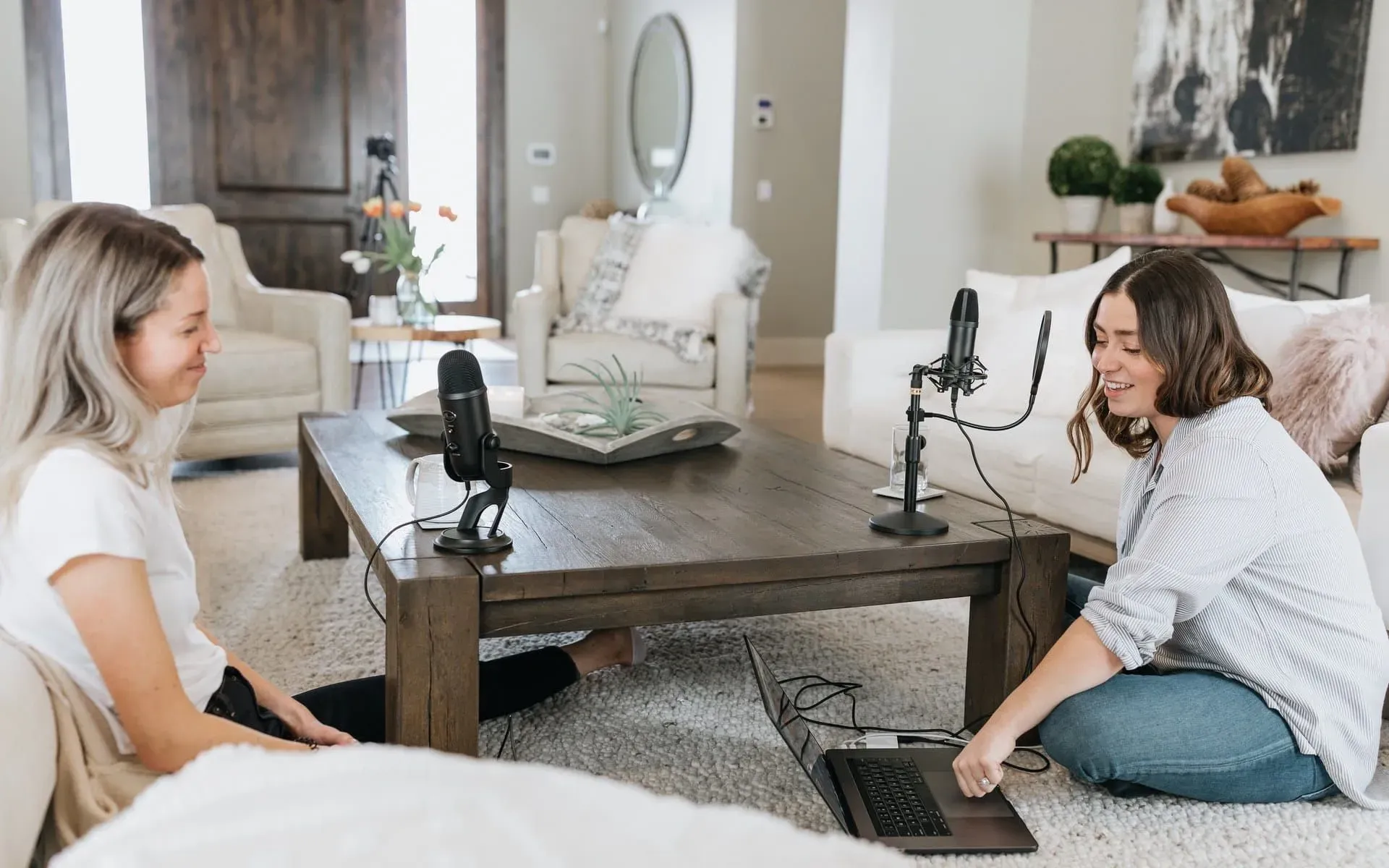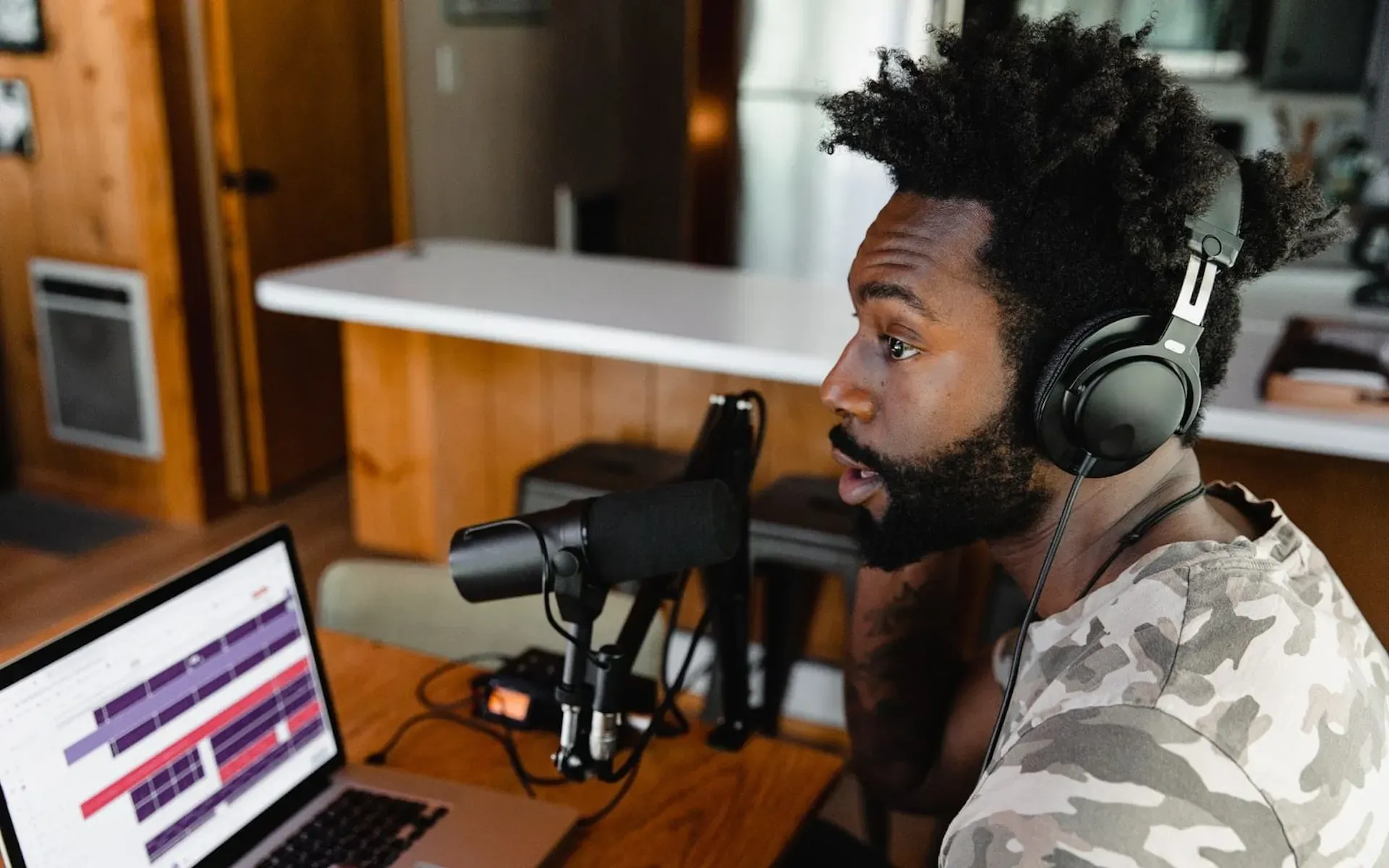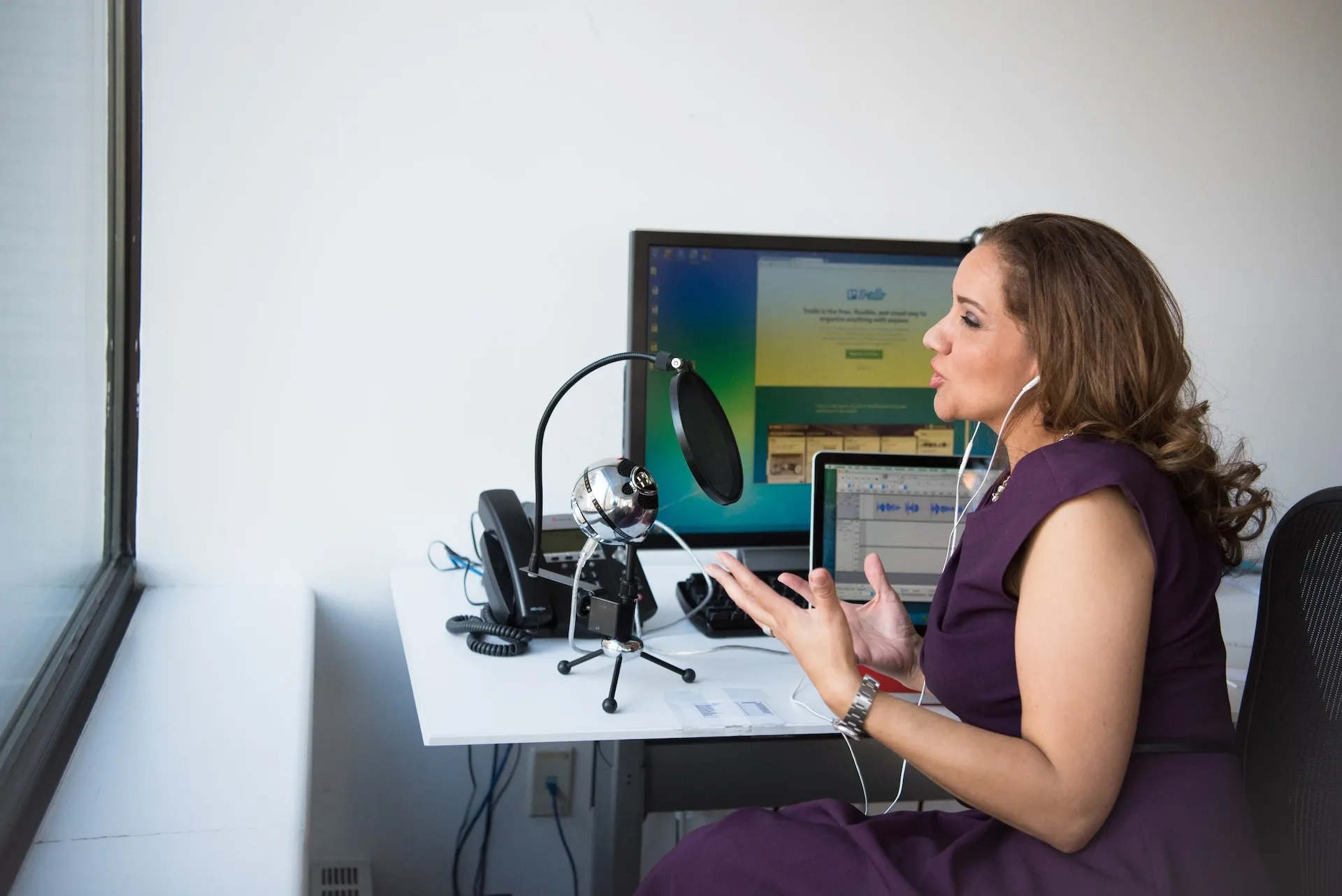How to start a podcast
Podcasting has divided audiences as its popularity rocketed. If you want to know how to start a podcast, here’s the info.

Podcasting. The 2010s’ and 2020s’ frontrunner for content, or magazines for lazy people? The medium has divided audiences as its popularity rocketed, and if you want to know how to start a podcast, be prepared to put in the hours! Here’s the info.
What is a podcast?
Thanks to personalities like Joe Rogan, the general public’s idea of a podcast is skewed. Of course, a podcast can be what Joe Rogan does: drag uber-famous faces into your studio, smoke a little bit, and talk about the universe.
But more broadly, a podcast is an episodic audio series that can be streamed, downloaded, and replayed – similar to audiobooks. They can be weekly, daily, or monthly. They can be about football, German techno, or science. They can be informative, just a bit of fun, or even wholly fictional. They’re usually available on streaming platforms like Spotify, Apple Podcasts, Deezer, and more. They’re everywhere and everything!
Can you start a podcast by yourself?
Of course you can! Plenty of solo podcasts, including Dan Carlin’s Hardcore History and You Must Remember This by Karina Longworth, are well-loved. They come in loads of different formats, so if you want to go at it alone – why not?

If you’re drafting someone else in, consider people who can offer different perspectives: if it’s three people with the same opinions on everything, the conversation’s going to be a little dry.
Here’s a step-by-step guide to starting your podcast.
1. Choose a name for your podcast
First of all, though, you need to think of the topic. Why should you make a podcast about this topic? How can you provide a different take if someone else has already covered it? There are thousands of music commentary and true crime podcasts out there, and the best ones are usually the ones that give the subject matter or format a fresh spin. Your podcast’s name should be that, in a nutshell.
2. Pick a format for your podcast
With that comes the format. Are your co-hosts permanent, or do you have a rotating guest slot every week? Do you cover the news, then do a deep dive into a particular story? A consistent format is essential when establishing a podcast, as it provides a structure for the listener. You wouldn’t follow a TV show if it went from quiz show to body horror to political commentary in the space of a few weeks, and that’s broadly true of podcasts too.
3. Buy a microphone
While podcasts have become popular due to their low-cost setup and easy distribution, they’re not ‘free.’ For one, you have to buy all the equipment, which costs as much as you decide!
You do need the audio to sound good, though – otherwise, people just aren’t going to listen.
What kind of microphone do you need to podcast?
- If you want a cheaper, plug ‘n’ play solution you can just stick into your computer, the Blue Yeti USB Microphone and the Samson Q2U USB/XLR Microphone can both be picked up for under a hundred bucks. These USB-ready mics offer loads of convenience and are perfect for starting out, but lack the customizable traits you get when using an XLR cable and audio interface. Depending on your set-up, you could also go for a smaller, ‘newsreader’-style lav mic. You can give our guide to lavalier microphones a read here.
- If you’re after something a little pricier, you could splash out on a RØDE Podmic or the Shure SM7B (the Shure is the one you see all the pro podcasters use!) While the RØDE mic is a similar price to the Blue Yeti, it requires an XLR cable, and subsequently an audio interface, to work. The audio interface converts the mic’s signal to the computer and lets you customize the sound. You’ll probably need a Cloudlifter too, which adds gain to your recordings without distorting them. This is all getting a bit complicated and expensive, so if you’re a beginner, go for the USB or lav mics.

4. Buy and install hardware and software for your podcast
- Don’t forget the little things, like a stand for your mic. It’s worth looking at pop filters, too – these are inexpensive ‘shields’ that you place in front of your mic to stop those pesky ‘popping P’ plosive sounds when you speak. A decent pair of headphones wouldn’t hurt either, as you’ll need them to hear what your co-hosts are saying, or to monitor your own audio as you record.
- Don’t worry too much about the software at the moment. You can experiment with professional audio software later on, but Audacity is the way to go for starters. It’s free, relatively user-friendly, and offers all the recording and editing tools you need to get your podcast off the ground.
5. Record your podcast
Well, after all that, the recording’s pretty easy! Naturally, it depends on whether you’re in-person or online, but if you are recording remotely, you’ll need to use Zoom, Skype, or a similar platform to talk to each other.
Once you’ve set your mics up, popped the recording channel over to mono, and can hear one another (assuming you’re not solo,) hit record! Before you start chatting ‘properly,’ you need to sync your recordings. Most people do this by clapping on the count of three, making the edit job way more manageable.
And that’s it! Ideally, you’ll have a script or outline covering all the points you planned. Once you’re done, end the recording, and save the original recordings for security – just in case something goes wrong.
6. Edit your podcast
Yes! If you’re recording with a co-host, import all the audio files into one project, set them as separate tracks, and start chopping! Edit within your software as necessary (delete your clapping intro, and trim any bits you felt ruined the flow.) It doesn’t have to be perfect, as it’s a conversation or monologue, but it obviously needs to be coherent!
Then just export it as an audio file, such as MP3, and set the bitrate to 96kbps. Your podcast episode’s in the bag! Sort of.
If you’re hunting for a theme tune for your podcast, don’t waste time rifling through poor-quality stock music. Dive into our massive, catalog below and pick the track that matches your podcast down to the bones. If you want to learn more about podcasts and music copyright, we’ve got you covered.
7. Publish your podcast
You don’t publish a podcast directly to streaming platforms. You need to find a hosting platform like Acast, Podbean, or Spreaker, to name a few. This is the place where your podcast files actually ‘live,’ and while most of them offer basic free options, the good stuff is usually behind a paywall. For example, when you look at PodBean, the free version only gives you five hours’ worth of storage, limiting you a bit!
Once you upload your podcast episode to these platforms, you can start adding things like artwork (which you can create in programs like Canva, or get a professional to do it for you,) categories, show notes, and more. The show notes are vital, as they help with searchability – we’ll get to that in a couple of minutes, though.
Once you’re ready to roll, you just use the hosting platform to submit your episode to streaming services’ directories. Most hosting platforms make this simple – you’d just need to click on the Spotify, Deezer, Stitcher, iHeartRadio, etc. option, and submit. Most of them process and publish pretty instantly, but for your first rodeo on Apple Podcasts, you face up to two weeks waiting for them to verify your podcast. So, if you want to launch your first episode on all platforms simultaneously, you'll need to plan in advance!

And that’s it, right?
Easy does it. Now it’s time to build that audience of yours.
8. Grow your podcast
Growing your podcast starts before you’ve even published your first episode. Your podcast’s show notes, accessible in your podcast hosting platform, act as metadata. This is the stuff ticking along in the background that helps streaming platforms categorize your content, so people find your podcast based on the terms they’re searching for.
Your episodes should be clearly and relevantly named, and the first paragraph should contain all the essential keywords and information. For example, if your hockey podcast includes an interview with Kurt Russell, about hockey… put that right at the start!
Once your podcast’s in the wild, its success lies in your hands. Tell everyone about it, interact with anyone who’s mentioned it, ask your friends to plug it for you – do whatever you can to keep it in people’s minds without being pushy.
This includes sticking to a schedule. People will lose interest if you’re inconsistent; that TV comparison holds up here, too! Even if it's every fortnight, make it a diarized thing, so people know they'll get the goods if they subscribe.
If you want to take things one step further and promote the heck out of your podcast, you can start an email campaign. Whether you’re looking to attract new listeners, snag a guest, secure a positive rating, or even ask for a sponsorship (more on that in a second), email is often the channel to plump for. Interested? Check out this list of email templates for all your podcast needs!

9. Monetize your podcast
You can make a solid income from podcasting, but to do it full-time, you have to command a dedicated fanbase. Here are a few ways you can monetize:
- Affiliate marketing. This means promoting products or services on behalf of an online merchant’s affiliate program, like ClickBank or Amazon Associates. You’re given a link or promo code to push out to your listeners, and if they use that to buy something, you’ll snag a commission. Loads of podcasters do this, but it can be pretty tricky to get people to use the links.
- Get a brand sponsorship. This is achievable but more likely when you’ve amassed a solid following, rather than right at the beginning. Also, once you have a sponsor, they might want to trade their support for some level of control over your content. So while they can be beneficial, be careful and make sure you know what you’re signing!
- Sell merch. Once you’re established, producing merchandise like t-shirts, mugs, and other bits and bobs is a great way to engage with listeners. Nothing says ‘biggest fan’ like a t-shirt with their favorite podcast quip on it! ut it can be pretty tricky to get people to use the links.
- Offer paid-for bonus content. Platforms like Patreon are perfect for this, allowing you to create various price tiers in exchange for membership perks. This could be anything and everything from bonus episodes to quizzes, live sessions, merch discounts, and more. Once podcasts gain a sizable following, they’ll often branch out into paid-for memberships on platforms like Patreon, as it offers listeners something special and gives creators more control over their work and income.
What are YouTube podcasts?
Creators can upload their podcast content to YouTube alongside a visual element. It could just be a soundwave or a moving image, or even in-studio footage of the podcast being recorded. YouTube is another place to monetize, and if it doesn’t take much effort, it’s worth exploring.
However, YouTube has been taking greater strides within the podcast scene. In March 2023, the platform made it easier than ever to make video podcasts in YouTube Studio. Creators can set existing playlists as podcasts, analyze their podcasts’ performance, and house their podcast-based content in a separate feed to their regular YouTube videos and YouTube Shorts.
That’s your starter kit, but the best lesson you can get is going out there and doing it for yourself! Good luck with your podding, and if you’re after music or sound effects to accompany your velveteen tones, we’ve got you covered. Click here to learn more about some of the best music for podcasts, and browse our catalog below.

Related posts:

